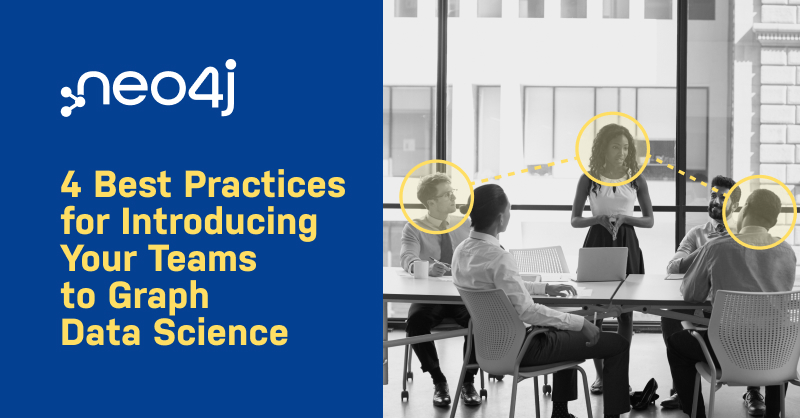4 Best Practices for Introducing Your Teams to Graph Data Science
2 min read

While Gartner predicts that 80 percent of data and analytics innovations will use graph technology by 2025, we understand that for most, knowing when, why, and where to use graph data science is uncharted territory.
Now is the time to learn about this new methodology. Give your team the confidence to know when Neo4j Graph Data Science is the best approach for the business problem they’re trying to solve.

Ready to get started? These are our recommended steps to get your data science team up to speed.
Step 1
We recommend sharing the 5 Graph Data Science Basics Everyone Should Know so your team can answer:
- What is a graph?
- How is graph data science different from traditional analytics?
- Why do graphs matter?
- What are the big questions graph data science helps answer?
- Who uses graph data science tools?
Step 2
Give your team ideas for how Neo4j Graph Data Science solves problems similar to theirs, so they can see practical business applications.
Our Graph Data Science Use Case Selection Guide features the breadth and depth of solutions across departments and industries from churn prediction to funnel optimization, fraud detection to cybersecurity and more.
Step 3
Explore our practitioner resources to deepen your team’s technical expertise.
- Register for a graph data science live demo to see Graph Data Science in action.
- GraphAcademy courses, like Graph Data Science Introduction and/or Fundamentals are great resources to help data scientists become graph data scientists.
- Try the Neo4j Graph Data Science Sandbox to get hands-on with sample datasets.
Step 4
Get your questions answered.
Neo4j Graph Data Science has a vibrant community of data scientists and Neo4j experts to support your learning journey.
We’re excited to have you and your team on this graph data science journey with us. By familiarizing yourself and your team with tools for success and adhering to these best practices, you’re going to quickly see powerful changes in the way you analyze data and make predictions.
Once your team has identified a Graph Data Science problem, pull your team together for a discussion with a graph data science specialist.







